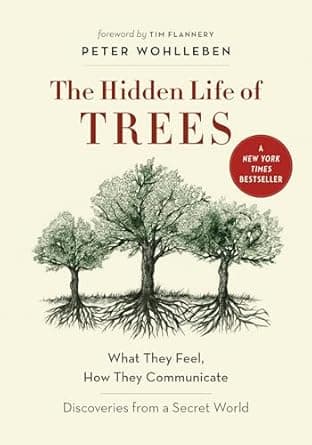
Book Stats
456
Upvotes
34
Downvotes
+422
Net Score
The Hidden Life of Trees
by Peter Wohlleben
Description
A forester's fascinating exploration of how trees communicate, cooperate, and care for each other, revealing the secret social networks of forests.
Peter Wohlleben's groundbreaking work reveals that forests are far more complex and interconnected than most people imagine. Drawing on cutting-edge scientific research and decades of forest management experience, he shows how trees communicate, support each other, and create sophisticated social networks.
The book's central revelation is that trees share resources and information through underground fungal networks, dubbed the "wood wide web" by scientists. These mycorrhizal connections allow trees to send nutrients to struggling neighbors, warn others about insect attacks, and coordinate forest-wide responses to threats.
Wohlleben's descriptions of tree communication challenge traditional notions of plant intelligence. Trees release chemical signals through their roots and leaves, allowing them to coordinate defense against insects, share resources during drought, and even influence the growth of nearby trees.
The book's exploration of forest social structures reveals remarkable cooperation among trees. Old trees act as "mother trees," nurturing young saplings by sharing nutrients and protecting them from harsh conditions until they're strong enough to survive independently.
Wohlleben's account of how trees experience time differently from humans provides new perspectives on forest ecology. What appears to be slow growth to human observers is actually rapid communication and adaptation when viewed on trees' timescales, with some responses happening over decades or centuries.
The work's implications for forest management are profound, suggesting that industrial forestry's focus on individual trees misses the forest's complex social dynamics. Wohlleben argues for management practices that preserve forest communities rather than treating trees as isolated commodities.
The Hidden Life of Trees has become an international bestseller, changing how millions of readers think about forests and plant intelligence. It demonstrates how scientific knowledge can be made accessible without losing complexity, inspiring greater appreciation for the natural world's sophistication and interconnectedness.